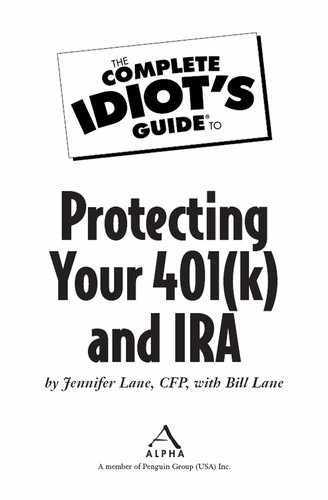Adjusting Your Asset Allocation
Think of retirement as a transition for your investments, not a door you walk through into an entirely foreign financial landscape. You should do a few things with your asset allocation in addition to organizing your accounts for tax savings and cash flow, but most of asset allocation management in retirement comes down to dealing with inflation and making regular adjustments and reviews.
What to Do Right Away
Retiring is much like many of life’s other transitions, such as getting married, starting a new job, and having your kids graduate from college. A good rule of thumb is to check in on your asset allocation calculations each time you go though a significant life transition. Retirement—whether you’re still working part-time or not—undoubtedly counts as one of these transitions.
Full Account
M&Ms (monthly money meetings) are even more important once you retire. The process of regular meetings puts some structure around your money management, both your month-to-month planning and longer-term financial planning tasks such as asset allocation. If you are a couple, it will also keep the communication active, especially as you both transition into your new lifestyle. Hundreds of my clients have retired over the years, and it has been both a joy and a learning experience watching them move from earning money and investing to letting their money support them. But this transition can be more difficult than it sounds. It feels a lot different planning monthly withdrawals from your account than simply taking a paycheck and adding investments to the nest egg. Changes in account balance become a lot more important to you when you realize that the money needs to last you the rest of your life.
If you’ve been keeping your portfolio balanced following an asset allocation all along, you may find you don’t need to make many changes as your portfolio is right on target. You might discover, though, now that you’re retired, that your risk tolerance has changed a little. Find out how you feel about risk by completing a couple online risk-tolerance questionnaires at www.CalcXML.com or on your broker’s website. Check your results against the asset allocation tools, rerun a retirement projection based on the new asset allocation (as a double-check that the asset allocation will be aggressive enough to cover your retirement income needs), and then compare the results to your current asset allocation.
Don’t make any large changes in your portfolio allocation right away. Instead, if your new target is different from where your investments currently stand, change the investment in 5 to 10 percent increments over the next six months to a year to implement your adjustment.

Rainy Days
Account volatility can be unnerving, but inflation can have an even more insidious and corrosive effect on your retirement accounts. Unfortunately, you don’t get monthly statements showing that effect—it’s only noticeable over time. Rerun your retirement projections with your new asset allocation to be sure it’s aggressive enough to keep pace with inflation.
Dealing with Inflation
A big reason behind keeping stocks in your retirement portfolio is to make sure your income keeps up with inflation. When you were working, you received regular cost-of-living or COLA increases. Now you have to give yourself regular COLA increases.
These three steps will help you deal with inflation:
1. Annually rerun your asset allocation calculator, which will suggest the amount of stock you need based on your age. Make the adjustments it suggests.
2. Track your expenses in an account aggregator, like www.Mint.comorwww.Yodlee.com, so you can see how inflation is affecting you. The percentage your expenses have increased since last year amounts to your personal inflation rate.
3. Social Security income automatically increases each year in step with inflation. If you’ve planned your nest egg carefully, you’ll be able to afford to increase your retirement plan withdrawals enough so that between the increase in Social Security and increase in withdrawals from your retirement accounts, you’re covering your personal inflation rate. Rerun your retirement plan projections to make sure you can afford to increase your account withdrawals, and then make the adjustments to your direct deposits.
When to Review
Once a year, review your investment portfolio, asset location, and asset allocation; rerun your retirement projections; and reset your monthly income withdrawals. January is the perfect month because you’ll be collecting information and documentation for your tax returns. The Social Security Administration will have reported their inflation increase in November, your Social Security check will have changed to its new monthly benefit amount, and you’ll be receiving your year-end statements from your investment accounts by mail. Of course, this doesn’t suggest you can ignore your finances through the rest of the year. Just as when you were working, continue your monthly money meetings (for more information on money meetings [M&Ms], see Chapter 1); check your accounts, income, and expenses; decide on any big or irregular expenses that might be coming up; and check on each family member’s cash allowance amount.
..................Content has been hidden....................
You can't read the all page of ebook, please click here login for view all page.
